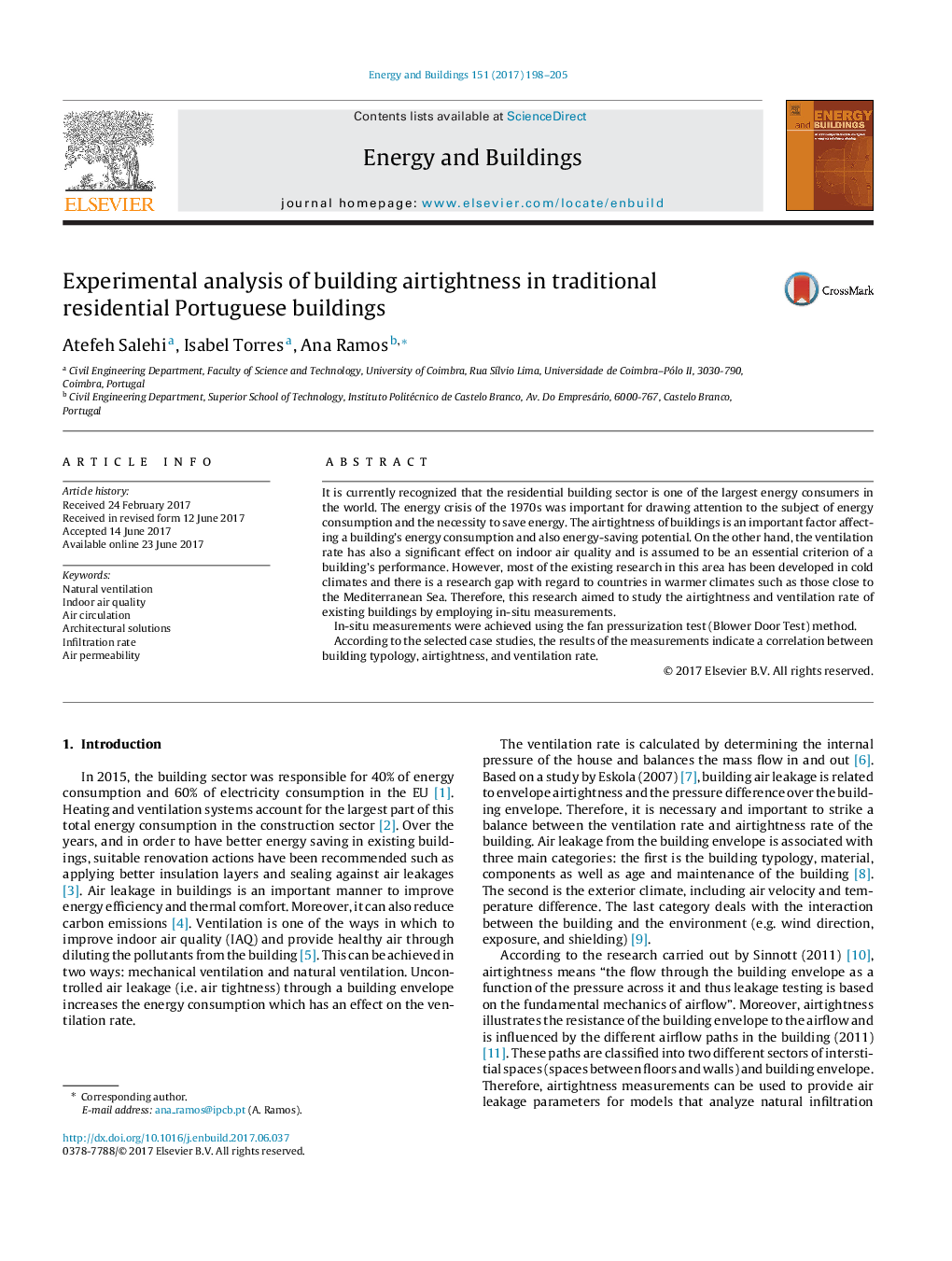| کد مقاله | کد نشریه | سال انتشار | مقاله انگلیسی | نسخه تمام متن |
|---|---|---|---|---|
| 6481070 | 1428939 | 2017 | 8 صفحه PDF | دانلود رایگان |
- The airtightness and ventilation rate of existing buildings in Portugal analyzed by employing in-situ measurements.
- In-situ measurements were achieved using the fan pressurization test (Blower Door Test) method.
- Building construction properties and quality of intervention have a strong effect on ventilation and air change rate.
- The average air change rate (n50) is higher than that of other European countries and EN-15242.
- The buildings are leakier in the depressurization test compared with the pressurization test.
It is currently recognized that the residential building sector is one of the largest energy consumers in the world. The energy crisis of the 1970s was important for drawing attention to the subject of energy consumption and the necessity to save energy. The airtightness of buildings is an important factor affecting a building's energy consumption and also energy-saving potential. On the other hand, the ventilation rate has also a significant effect on indoor air quality and is assumed to be an essential criterion of a building's performance. However, most of the existing research in this area has been developed in cold climates and there is a research gap with regard to countries in warmer climates such as those close to the Mediterranean Sea. Therefore, this research aimed to study the airtightness and ventilation rate of existing buildings by employing in-situ measurements.In-situ measurements were achieved using the fan pressurization test (Blower Door Test) method.According to the selected case studies, the results of the measurements indicate a correlation between building typology, airtightness, and ventilation rate.
Journal: Energy and Buildings - Volume 151, 15 September 2017, Pages 198-205
